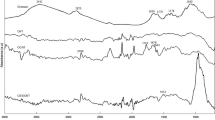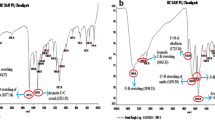Abstract
Carbon nanotube (CNTs) is a new alternative for efficient drug delivery and it has a great potential to change drug delivery system profile in pharmaceutical industry. One of the important advantage of CNTs is their needle-like, cylindrical shape. This shape provides a high surface area for multiple connections and adsorption onto for millions of therapeutic molecules. CNTs can be internalized by cells via endocytosis, passive diffusion and phagocytosis and release the drug with different effects like pH and temperature. The acidic nature of cancer cells and the susceptibility of CNTs to release the drug in the acidic environment have made it a promising area of research in cancer drug delivery. In this research, we investigated cell viability, cytotoxicity and drug delivery in breast cancer cell line by designing non-covalent single walled carbon nanotubes (SWNT)–doxorubicin (DOX) supramolecular complex that can be developed for cancer therapy. Applied high concentrations of DOX loaded SWNTs changed the actin structure of the cells and prevented the proliferation of the cells. It was showed that doxorubicin loaded SWNTs were more effective than free doxorubicin at relatively small concentrations. Once we applied same procedure for short and long (short: 1–1.3 µm; long: 2.5–4 µm) SWNTs and compared the results, more disrupted cell structure and reduction in cell proliferation were observed for long CNTs. DOX is bounded more to nanotubes in basic medium, less bound in acidic environment. Cancer cells were also examined for concentration at which they were effective by applying DOX and it was seen that 3.68 µM doxorubicin kills more than 55% of the cells.








Similar content being viewed by others
References
Meyya M (2004) Carbon nanotubes: science and applications. CRC Press, Boca Raton, pp 16–20
Kannan B, Marko B (2005) Chemically functionalized carbon nanotubes. Small 1(2):180–192
Rick A, Tracie B, Louise AB, Stacey F, Rachel AF, Ted G, Mia MG, Joan K, Chun Chieh L, Marji M, Kimberly M, Lisa AN, Dearell N, Anthony P, Cheri R, Ann GS, Scott S, Robert S, Dana W, Jiaquan X (2015) Breast cancer facts & figures. American Cancer Society, Atlanta, pp 1–6
Liming D, Mau AWH (2001) Controlled synthesis and modification of carbon nanotubes and C60: carbon nanostructures for advanced polymeric composite materials. Adv Mater 13:899–913
Jin Z, Hongling Z, Quan Q, Yanlian Y, Qingwen L, Zhongfan L, Xinyong G (2003) Effect of chemical oxidation on structure of single-walled carbon nanotubes. J Phys Chem B 107(16):3712–3718
Sun UL, Bong GC, Won HH (2013) Simple fabrication of exfoliated graphene/nafion hybrid as glucose bio-sensor electrodes. IFMBE Proc 40:54–56
Jing K, Nathan RF, Chongwu Z, Michael GC, Shu P, Kyeongjae C, Hongjie D (2000) Nanotube molecular wires as chemical sensors. Science 287:622–625
Philip GC, Keith B, Masa I, Zettl A (2000) Extreme oxygen sensitivity of electronic properties of carbon nanotubes. Science 287:1801–1804
Jing K, Hongjie D (2001) Full and modulated chemical gating of individual carbon nanotubes by organic amine compounds. J Phys Chem B 105:2890–2893
Nozomi N, Sarunya B, Xiaoming S, Kevin W, Hongjie D (2007) Noncovalent Functionalization of carbon nanotubes by fluorescein-polyethylene glycol: supramolecular conjugates with pH-dependent absorbance and fluorescence. J Am Chem Soc 129(9):2448–2449
Ke L, Hao L, Wei G, Mu C, Yun Z, Jiajun L, Liang X, Daocheng W (2015) Mulberry-like dual-drug complicated nanocarriers assembled with apogossypolone amphiphilic starch micelles and doxorubicin hyaluronic acid nanoparticles for tumor combination and targeted therapy. Biomaterials 39:131–144
Fuyin Z, Shige W, Mingwu S, Meifang Z, Xiangyang S (2013) Antitumor efficacy of doxorubicin-loaded electrospun nano-hydroxyapatite-poly(lactic-co-glycolic acid) composite nanofibers. Polym Chem 4(4):933–941
Robert JM, James HD, Kalyanasundaram V, Karen C, James R, George S, Lucille L, Merry T, Stephen S, Victor H, Kim M, Stephen F, Steven A, Paul C, Chul A, Lawrence W, Uday G, Jonathan H (1997) High-dose infusional doxorubicin and cyclophosphamide: a feasibility study of tandem high-dose chemotherapy cycles without stem cell support. Clin Cancer Res 3:2337–2345
Suming C, Caiqiao X, Huihui L, Qiongqiong W, Jian H, Qing H, Abraham B, Zongxiu N (2015) Mass spectrometry imaging reveals the sub-organ distribution of carbon nanomaterials. Nat Nanotechnol 10:176–182
Zhaung L, Xiaoming S, Nozomi N-R, Hongjie D (2007) Supramolecular chemistry on water-soluble carbon nanotubes for drug loading and delivery. ACS Nano 1(1):50–56
Safarova K, Dvorak A, Kubinek R, Vujtek M, Rek A (2007) Usage of AFM, SEM and TEM for the research of carbon nanotubes. Mod Res Educ Top Microsc 513–519
Zhuang L, Xiaoming S, Nakayama-Ratchford N, Dai H (2007) Supramolecular chemistry on water-soluble carbon nanotubes for drug loading and delivery. ACS Nano 1(1):50–56
Türker Şener L, Albeni̇z G, Di̇nç B, Albeni̇z I (2017) iCELLigence real time cell analysis system for examining the cytotoxicity of drugs to cancer cell lines. Exp Ther Med 14(3):1866–1870
Bektaş M, Hacıosmanoğlu E, Özerman Edis B, Varol B, Nurten R, Bermek E (2011) On diphtheria toxin fragment A release into the cytosol—Cytochalasin D effect and involvement of actin filaments and eukaryotic elongation factor 2. Int J Biochem Cell Biol 43:1365–1372
Claudia M, Markus A, Eva R, Eleonore F (2013) Suitability of cell-based label-free detection for cytotoxicity screening of carbon nanotubes. BioMed Res Int 564804:13
Pilco-Ferreto N, Pilco-Ferreto N (2016) Influence of doxorubicin on apoptosis and oxidative stress in breast cancer cell lines. Int J Oncol 49:753–762
Sinha BK, Mimnaugh EG, Rajagopalan S, Myers CE (1989) Adriamycin activation and oxygen free radical formation in human breast tumor cells: protective role of glutathione peroxidase in adriamycin resistance. Cancer Res 49:3844–3848
Zongbin L, Yeonju L, Joon HJ, Yin L, Xin H, Kenji Y, Mauro F, Ledu Z, Lidong Q (2015) Microfluidic cytometric analysis of cancer cell transportability and invasiveness. Sci Rep 5:14272
Nahid MD, Fatemeh A, Mohammad-Reza R, Mohsen A, Ali-Akbar G, Rassoul D (2014) Doxorubicin loaded folate-targeted carbon nanotubes: preparation, cellular internalization, in vitro cytotoxicity and disposition kinetic study in the isolated perfused rat liver. Mater Sci Eng C 39:47–55
Shixian L, Zhaohui T, Mingqiang L, Jian L, Wantong S, Huaiyu L, Yubin H, Yuanyuan Z, Xuesi C (2014) Co-delivery of doxorubicin and paclitaxel by PEG-polypeptide nanovehicle for the treatment of non-small cell lung cancer. Biomaterials 35:6118–6129
Heister E, Neves V, Tîlmaciu C, Lipert K, Beltrán VS, Coley HM, Silva SRP, McFadden J (2009) Triple functionalisation of single-walled carbon nanotubes with doxorubicin, a monoclonal antibody, and a fluorescent marker for targeted cancer therapy. Carbon 47:2152–2160
Dan K, Christa M, Rebecca J, Charles PU, Simon JO, Elyce M, Catherine E, Angel E, Scott G (2015) Application of xCELLigence RTCA biosensor technology for revealing the profile and window of drug responsiveness in real time. Biosensors 5(2):199–222
Donaldson et al (2010) Asbestos, carbon nanotubes and the pleural mesothelium: a review of the hypothesis regarding the role of long fibre retention in the parietal pleura, inflammation and mesothelioma. Part Fibre Toxicol 7(5):1–7
Kostarelos K (2008) The long and short of nanotube toxicity. Nat Biotechnol 28(7):774–776
Alan C, Maria D, Eva H, Fiona L, Hung B, Gordon C (2007) Probing the interaction of single-walled carbon nanotubes within cell culture medium as a precursor to toxicity testing. Carbon 45(1):34–40
Alan C, Eva H, Maria D, Fiona L, Hung B, Gordon C (2007) Spectroscopic analysis confirms the interactions between single walled carbon nanotubes and various dyes commonly used to assess cytotoxicity. Carbon 45(7):1425–1432
Robert HH, Marc M, Agnes K (2006) Toxicology of carbon nanomaterials: status, trends, and perspectives on the special issue. Carbon 44(6):1028–1033
Nancy MR, Alfred OI (2005) Challenges for assessing carbon nanomaterial toxicity to the skin. Carbon 44:1070–1078
Worle-Knirsch JM, Pulskamp K, Krug HF (2006) Oops they did it again! Carbon nanotubes hoax scientists in viability assays. Nano Lett 6(6):1261–1268
Pilco-Ferreto N, Calaf GM (2016) Influence of doxorubicin on apoptosis and oxidative stress in breast cancer cell lines. Int J Oncol 49(2):753–762
Pichot CS, Hartig SM, Xia L, Arvanitis C, Monisvais D, Lee FY, Frost JA, Corey SJ (2009) Dasatinib synergizes with doxorubicin to block growth, migration, and invasion of breast cancer cells. Br J Cancer 101(1):38–47
Chan KWY, Jiang L, Cheng M, Wijnen JP, Liu G, Huang P, Zijl PCM (2016) CEST-MRI detects metabolite levels altered by breast cancer cell aggressivenes and chemotherapy response. NMR Biomed 29:806–816
Cheng M, Riwan A, Jiang L, Bhujwalla ZM, Glunde K (2017) Molecular effects of doxorubicin on choline metabolism in breast cancer. Neoplasia 19:617–627
Author information
Authors and Affiliations
Corresponding author
Ethics declarations
Conflict of interest
Ayhan Ünlü, Mehdi Partovi Meran, Bircan Dinç, Nilgün Karatepe, Muhammet Bektaş, and Seniha Güner declare that they have no conflict of interest.
Ethical approval
This article does not contain any studies with human participants or animals performed by any of the authors.
Rights and permissions
About this article
Cite this article
Ünlü, A., Meran, M., Dinc, B. et al. Cytotoxicity of doxrubicin loaded single-walled carbon nanotubes. Mol Biol Rep 45, 523–531 (2018). https://doi.org/10.1007/s11033-018-4189-5
Received:
Accepted:
Published:
Issue Date:
DOI: https://doi.org/10.1007/s11033-018-4189-5




